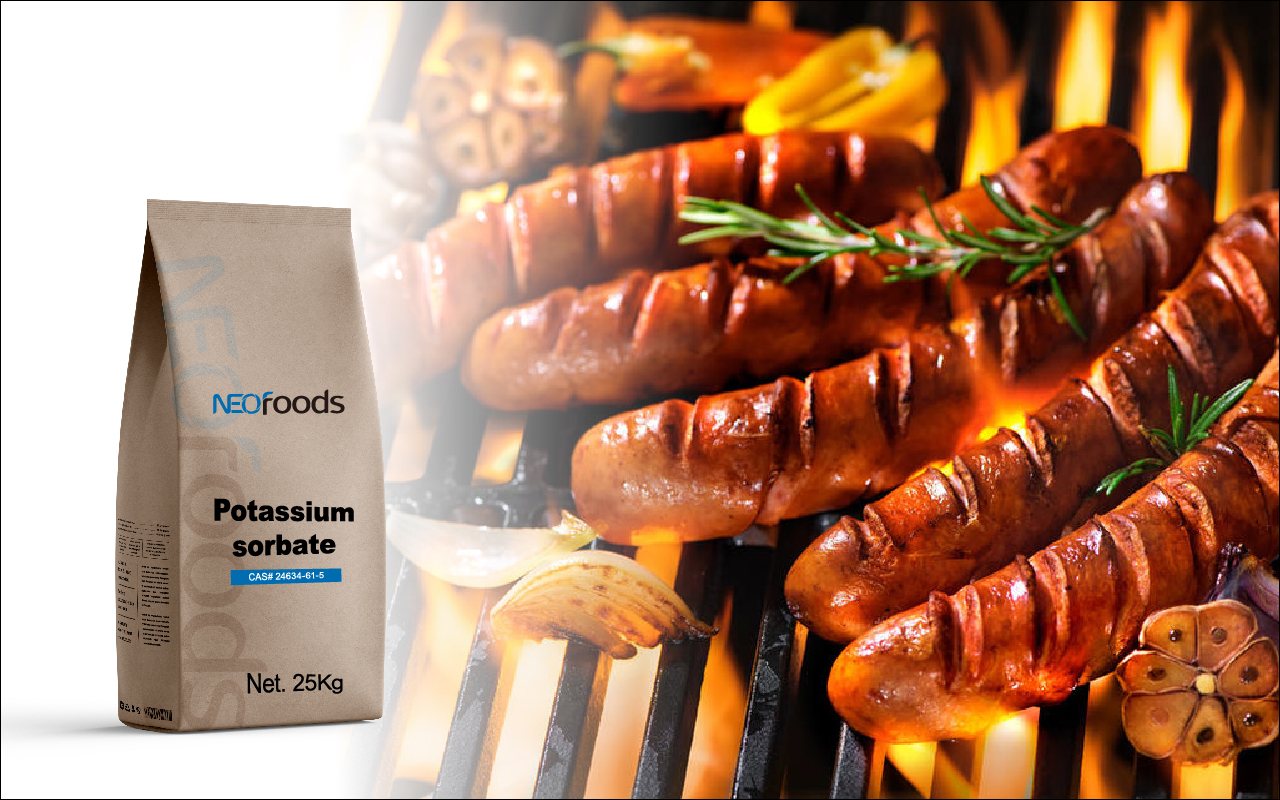
Potassium sorbate is the potassium salt of sorbic acid (C6H7KO2). While it is commonly seen in foods and beverages, it is used in various personal care products as well. It is mainly used to slow down the growth of molds, yeasts, and bacteria. Its key value is that it achieves this without compromising the product's natural taste, appearance, or texture.
Potassium sorbate is obtained by neutralizing sorbic acid with an equimolar amount of potassium hydroxide, after which the compound can be crystallized from an aqueous ethanol solution. Over time, it has been applied to many kinds of consumer goods. Its steady performance, together with a long record of safe use, explains why potassium sorbate preservative is now one of the most common preservatives in modern production.
The Role of Potassium Sorbate Preservative in Food
Preservation of Food Quality
• Prevents the growth of mold, yeast, and bacteria.
• Improves shelf life by slowing the activity of microbes
• Maintains the taste, smell, and appearance of products even during storage and distribution
Suitability for Acidic Environments
• Shows best results in slightly acidic foods and drinks
• Commonly used in yogurt, cheeses, fruit juices, and fermented beverages.
Consumer Benefits
• Keeps products safe and fresh thus reducing waste.
• Enhances food safety without changing flavor or color.
Safety Considerations
• Use it within the prescribed limits
• Overuse may change taste or irritate sensitive individuals. Therefore concentration levels must be carefully regulated.
Applications of Potassium Sorbate Preservative
Dairy Products
It is often used in cheese, yogurt, and creams to hold back mold, so these can be stored for a longer time.
Bakery Goods
Bread and cakes go bad quickly if nothing is done. Adding potassium sorbate preservative slows down the process.
Dried Fruits
Dried apricots, raisins, and similar foods keep their flavor better when potassium sorbate preservative is added, as it stops microbes from growing.
Jams and Jellies
In sweet spreads, yeasts and bacteria are a constant issue. A small amount of preservative keeps the product stable and extends shelf life.
Pickled Foods
Pickled vegetables and other brined items are another area where it works well. It helps them stay crisp and safe for longer without changing flavor.
Processed Meats
Products like sausages or cured meats risk bacterial growth. Potassium sorbate preservative is added to slow that down and to protect both taste and safety.
Beverages
Wines, ciders, and juices benefit from it too. Without it, unwanted fermentation can happen during storage.
Sauces and Dressings
In condiments, its role is to keep the product consistent by limiting microbial activity.
Sandwich Spreads
Items like mayonnaise rely on it, especially after the container is opened, to keep the spread fresh for longer.
Confectionery
Candies and other sugar-rich foods are prone to mold. Potassium sorbate helps prevent that so the product keeps its intended flavor.
Safety and Things to Keep in Mind
Regulators like the FDA and EFSA list it as safe when used within defined levels. Of course, that doesn’t mean “the more the better.” Go too high and it might affect flavor, or for sensitive people, irritate. But in controlled amounts, it’s one of the safer and more effective preservatives available.
It also tends to work best in slightly acidic foods. That’s why you’ll see it in fruit-based drinks or yogurts rather than in dry pasta. The potassium sorbate preservative is not about changing food but about controlling the natural elements that make food spoil.
FAQs
Q1: Does it change taste?
Not when used at proper levels. If it’s noticeable, it’s probably been overused.
Q2: Is it safe for kids?
Yes, potassium sorbate preservative is generally recognized as safe by major regulatory agencies for use in all age groups.
Q3: Is it only for large-scale food factories?
No. Smaller bakeries, local beverage brands, and even jam producers rely on it.
Q4: Can it be used in organic foods?
That depends on the certification. Some organic standards restrict synthetic preservatives.
Q5: How much is usually added?
Levels are low, often less than 0.1% of the recipe, depending on product type and pH.





Contact us